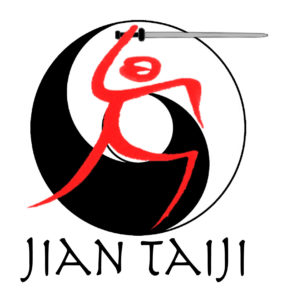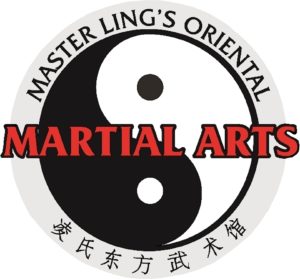Slanted FlyingJournal of Tai Chi Chuan
Training
Force from Structure vs. Acceleration in Taijiquan
We can illustrate these four terms by using an American football quarterback analogy. Fu (covering) would be like sacking the quarterback; making him uncomfortable and unstable, and preventing them from even starting to pass the football. Gai (blanketing) would be like hitting the quarterback’s arm on the backward preparatory motion, causing a fumble. Dui (intercepting) would be like hitting the arm in its forward motion and disrupting the pass for an off target incompletion. The thrown ball travels using momentum and is no longer able to be controlled or changed by the quarterback, but tun (swallowing) is like catching (gaining control of) the ball for an interception.
Differences can be seen between using momentum when walking normally in contrast with maintaining structure when stepping during Taijiquan. Normal walking is a series of controlled falls where our mass is propelled beyond our base of support, and before we stumble or fall, we step forward to catch our mass with the other foot/leg. This is moving forward using momentum. This type of stepping can be vulnerable to a partner/opponent who sweeps the stepping leg just before weight is transferred to it.
Taijiquan stepping instead seeks to maintain our mass within our base of support. This is moving forward with a unified mass and emphasizes structure. We train to touch the moving foot to the ground without any weight, and then shift weight onto it. The act of stepping, or shifting the weight from one leg to the other, then adds the acceleration of the unified mass, resulting in whole body force being generated.
Another way of stating this principle is that one uses their legs to generate the force rather than the arms. Since the legs are bigger and stronger than the arms, they can generate more force. Arm extension (pushing) or flexion (pulling) can add additional acceleration (and therefore more force) to the unified body, especially when using the arms during a finishing move (like when using fajin, 發勁 emitting trained power).
Fajin can be viewed like the crack of a whip. The whip analogy illustrates that the unified structure in Taijiquan is not rigid like a block of ice, but instead retains fluidity capable of transmitting wave-like energy through the body. While we are unified, we also want the body to retain its resiliency, its springiness. The wave accelerates the tip of the whip to produce a large force, and this is similar to the force generated in a “one-inch punch,” although with less movement than with using a whip.
When most people visualize the use of a whip there is an end point (the crack of the whip) rather than a continuous cycle of power generation. To maintain a continuing potential, one should maintain the rotation in the hip joints (a continuous ∞, a sideways figure-eight-like movement of the pelvis) so that after the “whip” cracks, the energy continues and the potential for another attack is maintained. If the whip can be applied as a sequential crack-crack-crack… rather than a single one, then it would be similar to a semiautomatic rifle ready to re-fire rather than a single shot rifle that needs to be reloaded.
Most strikes that rely on acceleration use a windup (“reloading”) prior to release (“firing”). The delay that a windup causes can be lessened by alternating the striking hands; winding up with one side while the other side is striking. The following video of George Foreman shows both the “reloading” and the alternating striking:
Notice that Foreman draws his elbow back behind his torso during his windup. In the context of boxing this adds to the acceleration of his fist when it is moved forward, and the power of his punch, without consequence since he is not in contact with an opponent and he is only moving against the minimal resistance of air. When he hits the bag he has moved into a strong angle for his shoulder and elbow (as well as the rest of his unified body) such that his structure is good when the powerful punch meets the target.
Foreman’s windup is fairly short, and one would likely need to be in contact with him, and be sensitive enough to detect the changes that he goes through, in order to potentially disrupt his punches. It would be easier to instead illustrate the potential control against acceleration by using a haymaker punch, which has a longer acceleration.
The following quote from reference.com reflects the principles mentioned earlier, and shows how a haymaker can be disrupted in MMA: “A haymaker can be defended against with a grappling move, by rerouting the attacker’s momentum, with a quick strike to the face or with a block that cuts off the punch’s momentum by striking at the attacker’s bicep.”
We train to improve our sensitivity and understanding of the changes that a partner/opponent goes through during their movements to generate force. If we understand their expressions of energy, and we are in contact with them, then we can potentially control or disrupt their force by taking advantage of the time needed for acceleration.
If we avoid moving through weak angles when we generate force, then it is more difficult for a partner/opponent to control or disrupt our expression of power. This is reflected in the analogy of the “nine pearl bends” (九曲珠 jiu qu zhu). The nine pearls can be viewed as the major bends of the body (ankles, knees and hips; lumbar, thoracic and cervical curves of the spine; shoulders, elbows and wrists). We want the “pearls” to be aligned, with force/energy transmitted through stabile centers and using strong joint angles.
When we use the Taijiquan strategy of fighting from contact in the middle range, we usually cannot use windups in order to accelerate through a greater range of motion to increase force. Therefore, we should optimize our structure throughout every movement in order to maximize our mass through using a unified structure. We also need to minimize using weak joint angles, and maintain our stability (central stability, 中定 zhong ding; alignment of the nine pearls; etc.) so that the partner/opponents that we are in contact with cannot disrupt our power train.
We also use our awareness, our sensitivity through touch, and our understanding of how energy is expressed in the body, in order to control our partner/opponent and disrupt their generation of force. We emphasize a unified structure, and we disrupt their use of sequential segments of their body being accelerated (their “kinetic chain”). We “borrow force” (借力 jie li) to take advantage of our partner/opponent’s momentum once they do accelerate, and/or we lead their momentum into emptiness in order to create a vulnerability for our counterattack.













